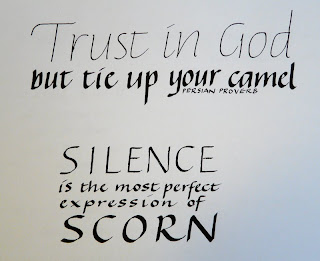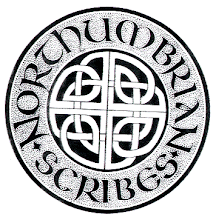
A great treat awaited scribes who went to see some of the ancient manuscripts held by the library. Using the connection with Bede as the theme, the librarian put out on display seventeen items ranging in age from a 6th century manuscript through each subsequent century to the late 15th. It was a journey that started with the oldest, written in the 6th century - a fragment from a copy of the Book of Maccabees - which had been "recycled" and used as a flyleaf in a much later (12th century) book, and believed to be from the library assembled by Benedict Biscop and almost certainly known and used by Bede himself.
Durham possesses an unrivalled collection of early, complete manuscripts and though most of the exhibits had been re-bound at some time, the contents were entirely the original thing.
An 8th century Gospel Book, written somewhere in Northumbria, was on display as was a Commentary on the Psalms, by the monastic founder Cassiodorus, which was acquired by Abbot Ceolfrith for his twin monastery - it could have even been copied by the hand of Bede himself.
Next came an 11th century copy of Bede's Ecclesiastical History, which is the earliest surviving copy of Bede's major work owned by the Library, and is one of sixteen of his books in their collection.
A work by St. Augustine, written in the distinctive Caroline minuscule hand used at Canterbury, somehow found its way to Durham by the year 1200; a copy of one of St Jerome's works, made in the Durham Scriptorium, showed lively drawings sometimes featuring fantastic creatures.
Then came something a little different, and a bit gory - an early 12th century book, "Medical and Astronomical Treatises" which described in drawings and writing how various medical operations were performed at the time.
As each century progressed, so the style of the books showed how sophisticated such items had become , especially in the integrating of text and commentaries in biblical works.
The brightness of the colours of the illuminations and the sharpness of the calligraphy with fine hairlines and some tiny letters and drawings could only be wondered at. The margins and lines were still visible and ready ruled - probably by some little apprentice - and not erased, but left under the writing, rather like faint scaffolding.








